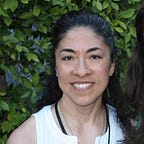How to Mix Color without as Much Guesswork
How to mix color. It’s one of the first things we learn as kids. Blue and yellow makes green. Red and blue makes purple. Red and yellow makes orange. Back in the day, when Crayola had a much more limited color selection, those were pretty reliable formulas.
But as the color selection grew, blue and yellow makes green didn’t always hold true.
Why?
To figure this mystery out, we have to delve into color theory.
The one class I didn’t take in university and I wish I had. I had to learn the hard way, through trial and error. The color mixing rules we learned as kids involved primary colors. Primary colors are red, blue, and yellow. These are the only colors that cannot be created by combining any other colors.
The combining of primary colors produces secondary colors…green, orange, and purple. Combining secondary colors with primaries creates tertiary colors…blue-green, red-orange, yellow-green, red-violet (purple), yellow-orange, and blue-violet.
On top of that, if you start incorporating black, white, and grey, which creates tints, tones, and shades, the combinations become endless. And art companies literally bank on that. The more combinations that they can create for you, the better. But how do you know which to combine?
Let’s reel it back a bit.
Primaries are red, blue, and yellow in their purest forms. A primary blue is just blue. If, for example, there’s even the tiniest amount of red added, it makes that blue lean more towards a warmer blue than a true primary blue. Even just a touch of another color means that blue is no longer pure.
So, if we take our last example with the warm blue and we try to mix it with yellow to get green, you’ll find that the resulting green won’t be a nice vibrant green. Instead, you’ll get a brownish green. Blue and yellow no longer make green.
Why?
Because you’re not just mixing blue and yellow anymore. You’re mixing blue, yellow, and a touch of red. Even though the blue is still visually blue and not purple yet, any amount of another color will throw off your attempts to mix colors. Blue and red are the makings of purple. Add yellow to purple and you get a funky brown. However, if you mix blue with a tiny bit of green in it and yellow, you’d end up with a very vibrant green.
This means that you, the artist, must be aware of the makeup of the colors you’re using.
Unfortunately, some companies use cute and clever and sometimes confusing names for colors rather than conveniently just listing all the colors involved in each pencil, crayon, pastel, or tube of paint. Instead, you have to rely on your own vision.
What I mean by that is when you’re figuring out how to mix color, attempt to eyeball the color first and determine whether it leans more towards one color or the other. Is that red a primary red? Or does it lean more towards orange-red? The other way to easily determine if the colors you’re trying to mix will work, is to just try it. Not directly on your artwork, of course. Always test things out on a scratch paper or some other surface that matches your canvas in terms of whiteness, as this can affect the appearance of each color.
It’s also helpful to make color swatches of your media (supplies). I find this extremely helpful when it comes to color pencils. Try as they might, the companies that manufacture color pencils rarely get the color right on the outside of the pencil which is supposed to identify the color. So, I make my own color strip with a square for each pencil and then tape the strip to the inside lid of the pencil tin. With my own color swatches, it’s easier for me to determine by sight which colors would mix with a successful outcome.
Creating your own color wheel is also helpful in building your color mixing skills.
Color wheels in their most basic form include primary, secondary, and tertiary colors. More complex and complete color wheels will include tints, shades, and tones, which are mixed with white, black, and grey respectively. There’s a book that was super helpful to me called, Blue and Yellow Don’t Make Green. I believe it’s out of print now, but Amazon has it for a ridiculous price. You might try eBay for a used one.
The question of how to mix color really isn’t rocket science as much as it is a matter of just doing it. Experiment. It’s different from medium to medium. Not the color theory part, but the medium itself behaves differently. Paints are very fluid and mix easily while color pencil takes layer upon layer upon layer and a whole lot of patience. Pastels are more powdery and therefore easier to blend than pencils.
So, if you’re not sure how to mix a particular color for a piece you’re working on, it would behoove you to stop and experiment first. Never, ever try to create the mix directly onto your work in progress. More often times than not, you’ll end up with a mess you have to fix.
Or worse yet, scrap the whole piece.
